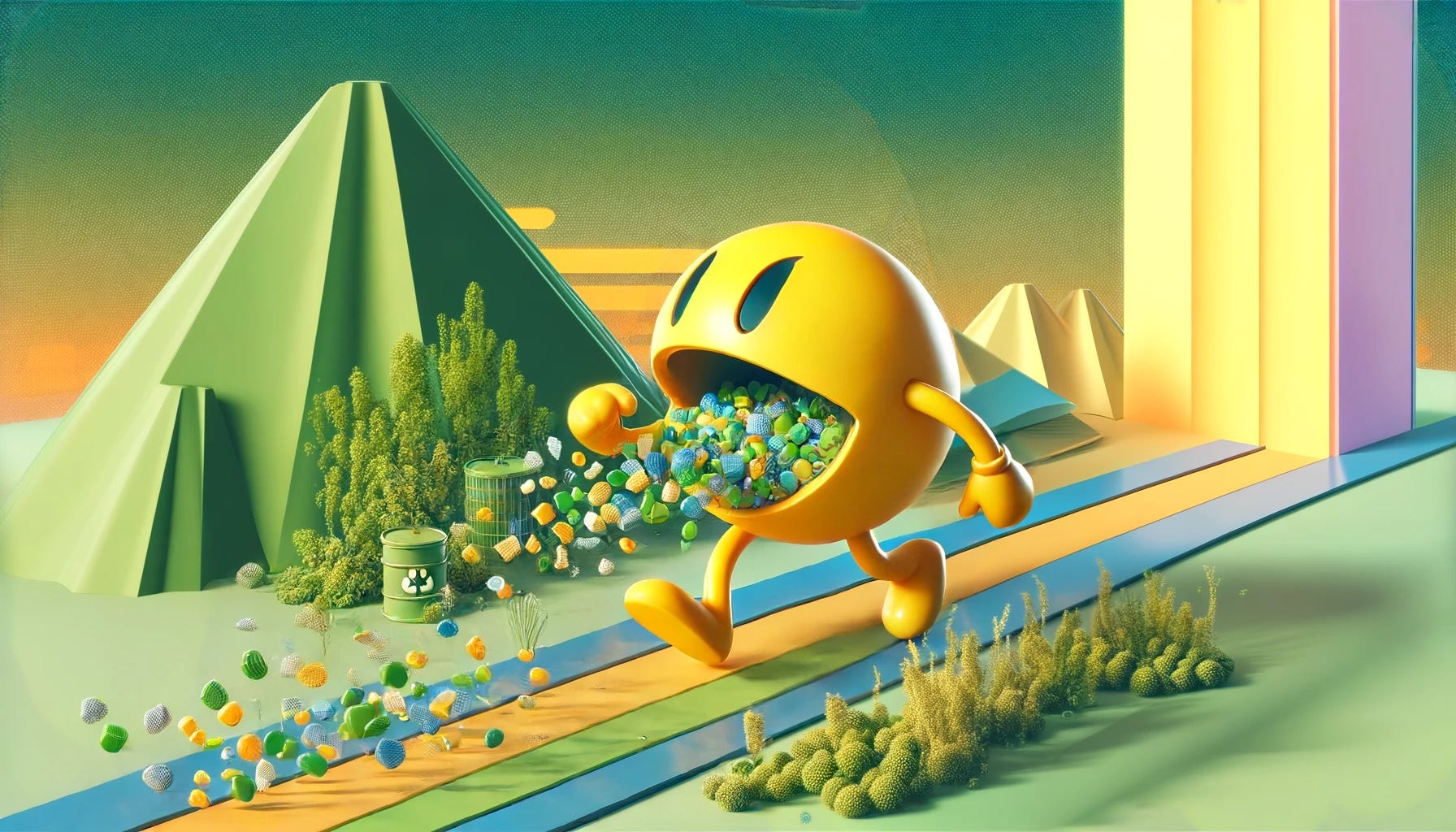In the battle against the ever-growing scourge of microplastic pollution, a new ally has emerged from the lab: synthetic biology.
This groundbreaking field, which involves redesigning biological systems for specific purposes, offers immense potential for developing innovative solutions to degrade the tiny plastic menace that has seemingly infiltrated every corner of the planet.
In this article, we’ll briefly cover the main threats that microplastics pose to ecosystems, as well as how synthetic biology is being harnessed to solve them - starting with engineered plastic-munching E. coli and cell-free enzyme cocktails.
The Microplastic Menace
Let’s start by very quickly getting everyone on the same page RE: microplastics. The short of it is that they’re miniscule fragments of plastics, constituting less than 5mm in size in any one direction, and are generally understood to originate from the breakdown of larger plastic waste. Though they’re sometimes even intentionally manufactured for products like cosmetics or toothpaste.
When ingested by organisms, microplastics can cause physical damage, impair feeding, and introduce toxins into the food web. And, somewhat unsettlingly, they have now spread to every habitat on Earth - from the rainforests to the poles. Hence they now pose serious threats to wildlife, ecosystems, and our own human health globally.
Current methods to manage this waste, like mechanical cleanup or chemical treatment, are good first steps. But they’re ultimately limited in efficiency and sustainability. If we’re to combat this global scale phenomenon, we need a method that is not only sustainable, but can scale. Conventional technology doesn’t cut it in this regard. We need new tools to eliminate microplastics from the environment.
Harnessing Synthetic Biology
This is where genetic engineering and biology comes in. By applying engineering principles to biology, synthetic biology (synbio) allows researchers to redesign microorganisms to perform valuable functions - such as in this case, degrading plastic polymers.
There’s lots of fascinating information on just how this is achieved, but the general approach involves identifying natural enzymes that can break down common plastics and then optimizing their activity in host microbes using genetic engineering. The resulting supercharged bacteria can then munch their way through microplastics, like pac-man through a maze of pellets.
In general, scientists have focused on improving naturally occurring enzymes that can break apart common plastics. By making small changes to the structure of these enzymes, it’s possible to create versions that work at higher temperatures, as well as break down plastic faster. These genes can then be inserted into microbes like E. coli, using genetic tools that make the bacteria produce large amounts of the enzyme. To get the enzymes out of the bacteria and onto the plastic, researchers can tweak the bacteria's protein transport systems or attach molecular tags that tell the bacteria to export the enzymes. This floods the surrounding environment with plastic-munching enzymes that turn the plastic into useful resources for the E. coli.
The next step is then to figure out what happens to the plastic pieces after they've been broken down. Completely taking apart plastics often creates smaller chemical building blocks that can be harmful to the bacteria. To solve this, you can then give the bacteria new metabolic abilities to use these chemicals as food; linking them into core energy-producing pathways. This approach not only makes the breakdown products less toxic, but also lets the bacteria grow using the plastic as its only food source. The ultimate goal is hardy microbes that can break down plastic waste efficiently and keep going in real-world settings like landfills or oceans; all whilst producing no emissions and scaling naturally without the need for any infrastructure.
But why stop at just the one pac-man? Why not get an army of pac-men? Some teams of researchers are also exploring how to design groups of symbiotic microorganisms that work in tandem with one another to break down plastic waste even faster. These microbial consortia leverage the individual strengths of their members in a coordinated attack on polymers.
Cell-Free Strategies
But some people may (understandably) be hesitant to release superbugs into our oceans and habitats. So what then? Well, fortunately, for those who prefer their plastic degradation without living cells, synthetic biology still offers a solution. Some researchers are focusing on degradation plastics instead via cell-free systems - essentially enzyme cocktails that can break down plastic waste without the complexities of managing whole microbes. These systems combine different enzymes sourced from plastic-degrading bacteria and fungi, like lipases that cut through fats and esterases that dismantle esters, two common chemical bonds in plastics. By carefully selecting and mixing these enzymes, scientists can create customized blends tailored to specific types of plastic waste. Without cell membranes or growth requirements to worry about, these cell-free approaches give greater control over reaction conditions and allow enzymes from diverse organisms to work together - even those that couldn't naturally coexist in one microbe.
However, while synthetic biology holds immense promise for tackling microplastic pollution, challenges remain. Engineered microbes or enzyme systems need to perform consistently outside carefully-controlled labs, facing real-world hurdles like fluctuating temperatures, pH levels, and the presence of other chemicals. For living microbes, there's also the critical task of ensuring biosafety. Before any environmental release, rigorous testing and clever biological safeguards - such as engineered kill switches or nutrient dependencies - are essential to prevent unintended spread or impacts. Equally important is scalability: lab techniques that work wonders on grams of plastic must be translated into cost-effective processes handling tons.
But with strategic collaborations spanning academia, industry, and government, these obstacles can be overcome. The market potential for effective, responsible solutions to microplastic contamination is enormous, from consumer products to environmental remediation. The end goal is a world where microplastics no longer imperil ecosystem and human health. Synthetic biology will likely be a key player in this mission, alongside other innovations in materials science, green chemistry, and waste management.
Sources:https://pubs.rsc.org/en/content/articlelanding/2023/nr/d3nr01512bhttps://www.frontiersin.org/journals/microbiology/articles/10.3389/fmicb.2023.1127308/full












